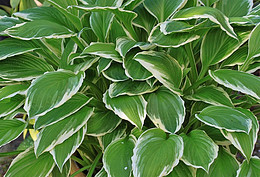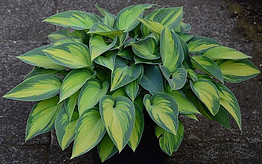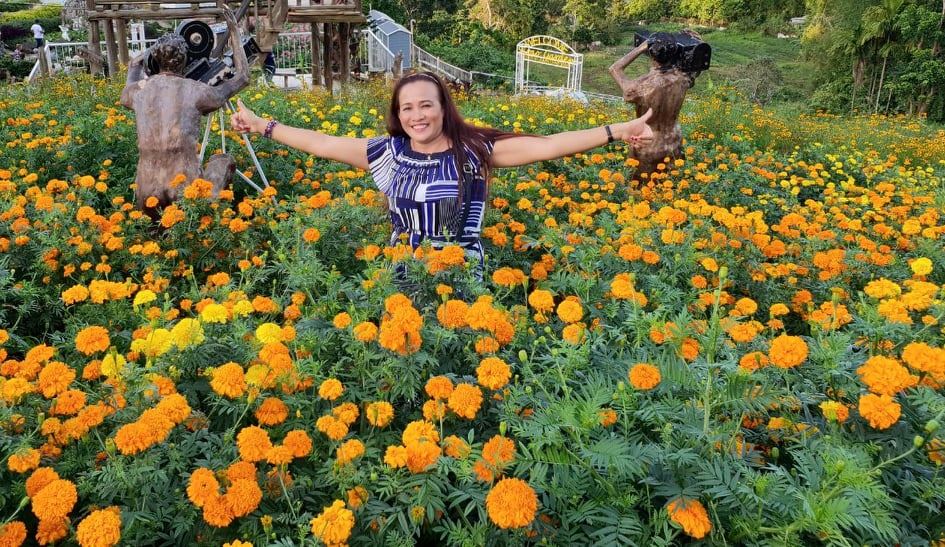
Hostas are well-known garden plants that are valued for their deluxe foliage. They are basically easy to take care of, but they do not gain from being cut back when they go into dormancy. Pruning hostas is an easy task.
When each of them falls, they might need to be pruned. They need to be pruned especially when you are battling with pests like slugs. It is also good to trim your hosta flowers when they start to fade because it brings out the foliage’s beauty.
Part A
Deadheading the Hostas
1. Trim the flower stalk around the base using sharp shears. The aim of taking away the flower stem is to keep it from making the look of your garden ugly. So, it would help if you always trimmed as close to the plant’s base. This will ensure that the trimmed-off stalk stays hidden under the wide leaves of the hosta.
2. Cut off the hosta flowers before they grow and start disturbing the foliage. If you have picked a hosta plant because you adore the ornamental leaves, not feeling the same way about the flowers, cut them off before they grow and start to grow seeds. If you want, you can leave the flowers alone and wait till they wither.
- The flowers will begin to absorb energy that should be absorbed for the leaves to grow once they start to go to seed
- When you get rid of the flowers on a hosta, it will not produce more flowers that season.
3. If you would like to keep the flowers, the blooms should be cut off once they turn brown. Although the tall and thin stems of the hosta flowers might not be seen when the flowers have withered, you’ll get more pleasure from the bloom by letting it stay on the plant than cutting it off. The hosta flowers don’t last long, that’s why they wither fast when they’re cut.
- Hummingbirds and bees are also useful to the hosta flowers, and leaving the hosta flowers alone helps your local ecosystem.
4. If you want to attract birds to your garden, don’t remove the flowers. Birds eat the seed-heads of hosta flowers. If you want to keep the local environment healthy, you should let the flowers produce seeds.
- When you do this, what you need to do next is snip the plant back in the fall. When the leaves turn brown, the flower stalks will too.
Part B
Cutting Back Your Hosta
1. Prune hostas after the first frost. You don’t need to cut the hostas for them to stay healthy, but you can cut them when they start looking rough during winter. After the first hard breeze, the plant color will turn brown and wither, so it is better to prune them by that time.
- Hostas are one of the first plants to die in the garden, but they grow back when it is spring
- If you do not prune your hostas, it becomes ugly, and the eggs will hatch if you leave the foliage
- Slugs can be very tough to control. They can ruin an entire healthy plant.
2. Cut the plant down up to 5.1 – 7.6 cm with pruning shears. Nothing bad will happen to your hostas in the winter if you cut it down to the ground level since everything the plant needs is in the ground. Ensure to leave a few inches when you cut; it will serve as a location mark for the plant.
- Hostas fare better in the ground than in containers, so there’s no need to dig them up
- It’ll be easier to prune the body of the hostas when it is dead.
3. 2.5 cm of mulch must be laid down to protect the hostas from cold. If the hostas are not mulched when it is growing season, mulch them after pruning. Hostas can withstand the cold, but mulching will help protect them from continuous freezing and then melting, negatively affecting the hostas.
- When the weather is starting to get warm, the extra mulch that is about the crown of the hosta should be removed to stop it from spoiling.

Part C
Pruning to Treat Pests and Diseases
1. Leaves that have been eaten by pests should be removed. Many insects and animals like to feed on hostas. If you notice that your hostas have bite marks, trim the bitten part away with a shear or a sharp knife. Trim it as close to the stem as you can.
- The leaves of your hosta plants can also be damaged by hail.
- To help and assist the growth of the plant, cut off the damaged leaves so the energy can be channeled towards the healthy parts of the plant.
2. Infected leaves and stems should be cut away. Try to point the flow of water towards the base of the plant when you are watering your hosta plants, when you start noticing withering leaves, blemishes, or stunted growth, that could signify the presence of fungus or nematodes.
3. Clean your cutting tools after pruning the plants that have been infected. Blights can be spread if you don’t clean the infected tools after pruning. Even if you are not sure if the tool has been infected, wipe the tools with alcohol before moving to the next plant.
- If you are dealing with a contagious virus-like virus X or HVX, hands and tools should be washed after handling each plant.
4. Set infected hosta plants ablaze if you can. Many diseases can affect your hostas; the most difficult one to deal with is HVX. If you spot or see light green, or dark green lines moving along the veins of the hosta leaves, spotted or blemished stains on the leaves, withering leaves, or circular spots, it could signify that hosta virus X is spreading rapidly.
You need to remove the entire plant to prevent it from spreading. Burning the infected plant is the most efficient way of keeping it from spreading, but you have to make sure you have permission to do so.
- There are other diseases that can affect your hosta plants. Diseases, root-knot nematodes, petiole rot, and anthracnose fungus can also affect the hosta plants.
Conclusion
This post talked about hostas and gave a guide on how to prune the hosta plants. It also talked about the importance of pruning the plant. Some diseases that you should be on the lookout for were mentioned. The post’s overall aim is to prepare you in case you have hostas and would like to prune it.
I hope you enjoy reading these articles, and if you have any questions, please feel free to leave your comment below, and I’ll be happy to write back to you.

Roy
Interesting article about how to treat hostas, if you have them in your garden. I have had hostas but haven´t made a lot of effort getting to know them as you have. The procedure to trim the flowers and dead parts of the hosta plant is great info that is easy to set in action based on the detailed description you have provided. I wasn´t aware of the risk of attracting the HVX virus and the effect it. The symptoms of green veins spreading and dark circular spots should be easy to discover.
I was surprised that the hosta plant seems to be quite tolerant of cold and freezing temperatures. You have provided good information on preparing for the cold season and preparing for the warmer periods of the year.
Roy
admin
Hello Roy,
Welcome to my Amazing Garden. Thank you for your interest in reading the articles about the Guide to pruning Hostas. Thanks to that, you find these helpful guides on pruning hostas plants. Thank you so much for your kind feedback on this article. Thank you so much.
Joyce
Jongabriel
Haha, thanks for the article, my guy! Just like your dill article, I found this one pretty helpful! Not too knowledgeable about gardening, but it’s definitely something pretty cool I want to get better at. Quick question, though. Why is pruning something gardeners have to do? It doesn’t really make sense to me.. and do all plants have to be pruned at some point?
admin
Hello Jongabriel. Thank you for your interest in reading this article tackling Guide to Pruning Hostas. Thanks to that, you found this helpful to you and your future gardening season. Why pruning? Just simple. People like to prune their plants as they want to maintain their shape or curve. Some pruning it as they want to control their tree’s tall and avoid overlapping with other neighborhood fences.
Indra W
Frankly, I’m not really into gardening, even though, on the contrary, my wife is superb at it. After reading the article, I think I’m a little connected with it. I remember that this kind of plant is one of many that my wife is caring for. I just had no idea what the name was. I guess I can show off a little about this to impress my wife! Thank you for the article. I appreciate it much!
admin
Thank you so much, Indra. Thanks for reading these articles about the guide to pruning hostas. It’s good that you can relate now with your wife and knowing the plants that she is taking care of within your garden.
Thanks and best wishes,
Joyce